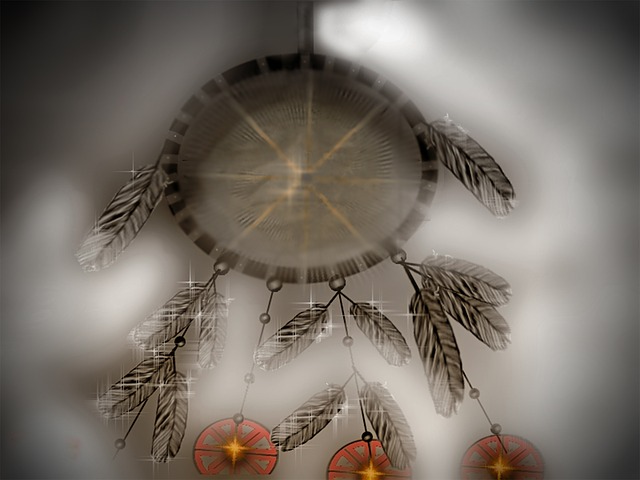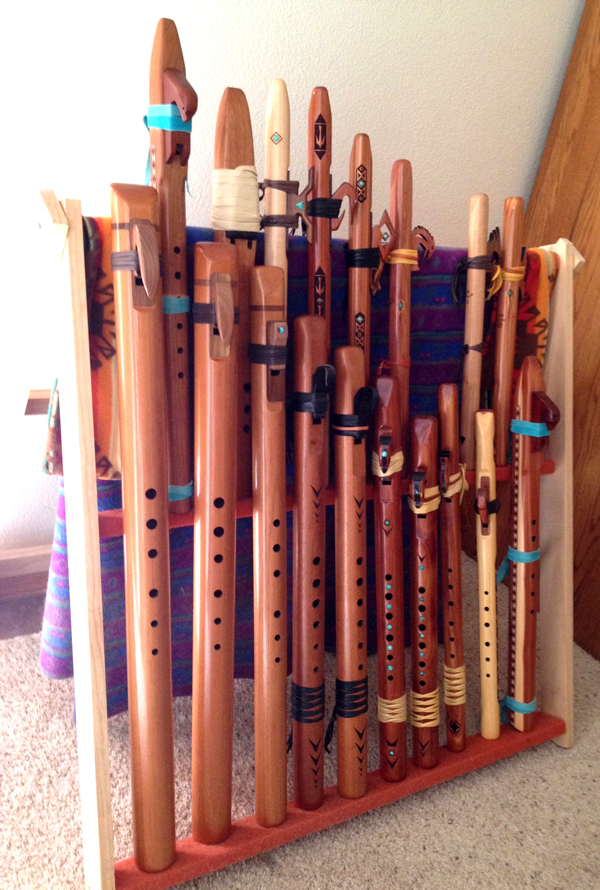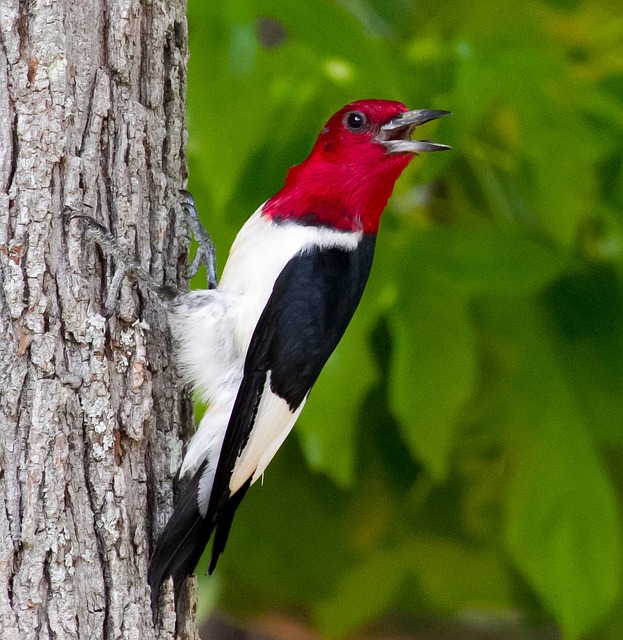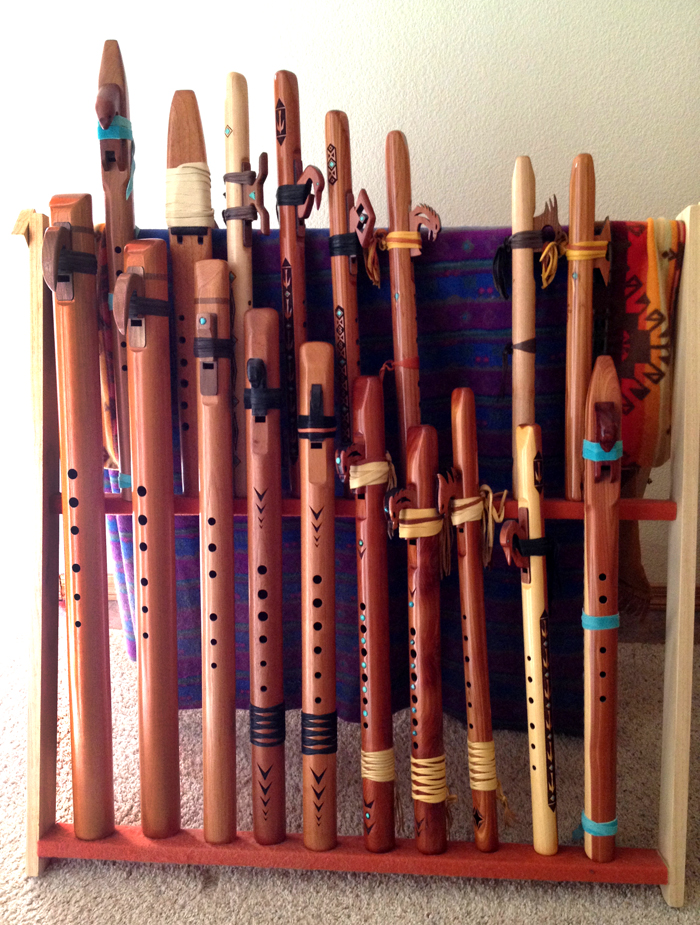All Flutes hold a special place among musical instruments. It’s not only the oldest instrument, but it is also played in cultures across the world. The oldest one is said to date back at least 35,000 years. These are one of the best instruments used to create meditation music.

There are many cultures that use flutes, one being India. The Indian flute is traditionally made from bamboo and independently developed from its western counterpart. Mostly found and used in folk music, the Indian Classical flute was crafted into a classical musical instrument by the legendary flutist Pannalal Ghosh. He developed the tiny folk instrument into a bamboo flute (32 inches long with seven finger holes) great for playing traditional Indian classical music.
The western concert flute was developed from the 19th century German flutes. This particular model was made from a variety of materials including wood, nickel, brass, silver, gold and sometimes even platinum. This is one of the highest common orchestral instruments, with the exception of the piccolo which plays an octave higher.
The Chinese and Japanese flute is another glorious instrument. There are various types of Chinese models or dizi. They come in all different sizes, many different structures, with a number of holes (from 6 to 11) and intonations (different keys). The most noticed of Chinese instruments are the bangd, quid, xindi, and dadi, the more known flute being the vertically played bamboo model called the xiao. Chinese flutes are mostly made of bamboo, wood, jade, bone, and iron.
For more information on meditation music and how it can benefit you visit http://ancientechoesllc.com/meditation-benefits/.
The didgeridoo is a wind instrument that was developed by indigenous Australians in Northern Australia around 1,500 years ago. This instrument is still widely spread around both Australia and the world. Often described as the natural wooden trumpet. Musicologists identify the didgeridoo as a brass aerophone.

There have been no reliable answers to the didgeridoos exact age adding a mystical feel to it. A modern didgeridoo is typically conical or cylindrical, and can measure 3 to 10 feet long. Most measure in at about 4 feet long. The longer the instrument the lower the pitch or key of the didgeridoo will be. However, more flared instruments play a much higher pitch opposed to an unflared instrument of the same measurements.
For more information about the didgeridoo and the Native American flute visit http://ancientechoesllc.com/blog/
The Humpback Whale song is breathtakingly beautiful. Since 1971, we have began to understand and learn about their songs. Whales use singing as a navigational tool to find their way across the big blue waters during migration. Males sing to attract females and whales sing in their feeding season during the summer. They repeat long and short sounds multiple times creating a long song that can last up to thirty minutes. Their songs range from low bellows to high-pitched squeals. All male and female whales can sing, but only the males can sing organized songs.

Some say the Humpback Whale song can heal, by providing a way to connect with your consciousness. Notice how the song is calming and unique; you can release yourself into the song and relax. The Whale songs are great to use for meditation music. You can lose yourself in the sound of the beautiful Humpback whale.
For more information on how meditation music benefits you visit http://ancientechoesllc.com/music-therapy/

We don’t just play the Native American flute, we have a lot of fun doing it! When we get together and play music or write new songs it is always exciting. Matching our tones and getting the harmonic sounds to dance along the same trail is always a real treat. Creating this music is very heart warming and satisfying. Anyone that plays any instrument will tell you what an amazing feeling it is to create such a wondrous melody that brings life to everything. Giving people the gift of meditation music and relaxation music is what we do best. Getting to spend time with my friend and doing what we love is a pleasure. We do share some laughs and, after all, some say laughing is healing. Healing is a long process, and laughter and music just may shorten it.
For more information about how the Native American flute can benefit you through relaxing music and meditation music check out http://ancientechoesllc.com
Native American flute music can be relaxing and calm while loud, unpleasant and pumped music can have an antagonizing and stressful influence! With this in mind, the research community has asked, can the right music, played at the perfect volume, human wellbeing? Can music calm the nerves and better the quality of life? According to recent studies the answer is yes!

What is music therapy?
Music therapy uses music or sound to enhance the outcome of, or give comfort to, patients. This type of therapy can be given to individuals or groups, and might involve playing music, writing music, creating or discussing lyrics and just listening to music. Sessions can involve movement and dance. Various musical therapies are also conducted at the bedside, even during surgery, while a patient is under anesthesia.
How will music therapy help me?
A variety of studies have shown that music therapy can lower blood pressure, improve sleep and even reduce anxiety. Many cancer patients who receive music therapy along with chemotherapy report less nausea, pain and anxiety during the phases of treatment. Stroke patients have reported an increase in self-motivation, better attitudes and improvement in their recovery.
What music should I be listening to?
The type of music used varies between different people. Everyone has a particular taste and style. What will help you may not benefit others in the same way. Some good choices for music therapy might be Native American flute music. The flute’s tones create very relaxing music. Another option is classical music.
For more information about how the Native American flute can benefit you through relaxing music and meditation music check out http://ancientechoesllc.com
The Native American Flute is carved from wood, making the flute’s unique sound different from any other instrument. This is the only flute in the world where the air is blown out and re- enters the flute to make its wind-like sound. Native American flutes also differ from other flutes because they are made from various types of wood, traditionally from a cedar tree. Many people carve flutes from different woods to create sharper, more crisp and mellow sounds. For example, red cedar wood makes a very mellow sound, birch makes a sharp crisp sound and mahogany makes a mellow like sound.

This flute is a very simple instrument using only five tone holes, without any moving mechanisms to assist the player. Without the moving parts, it intensifies the relationship between the breath and sound response of the flute. You can see and hear how the player’s breath affects the pitch, tone, and dynamics, as the player’s fingers dance across the holes. Playing the Native American Flute can help you understand breath support and its connection to pitch, tone and quality.
The Flute range is typically 1.3 octaves. The special sound production mechanism (a moveable block called a “bird” or “saddle”) has some adjustable parts. On more traditional wooden flutes the bird is commonly secured to the flute body with a leather cord. Tuning and fingerings with various wooden flutes are not standard. For more information about the Native American flute and how it can benefit you through meditation music and relaxing music visit ancientechoesllc.com

A long time ago, there was a young man who became interested in a beautiful young girl. The young man was always trying to grab the young girl’s attention, but she never seemed to notice his efforts. Whenever she came near him, he would proudly ride his horse around, but still he failed in attracting her notice.
One day, when all the girls went down to the river to get water, he followed them. There, he dove off the rocks and swam across the river to show her that he was skilled, but still she paid him no mind. Feeling rejected, he went into the nearby old growth forest and sat at the base of a dead cedar tree. As he sat there, thinking about the beautiful young girl, a woodpecker came and stood on a hollowed limb that was over the young man’s head. The limb had been hollowed over time from weather.
The woodpecker started to peck holes, tapping along the length of this wood. As the woodpecker kept pecking, the limb cracked loose and fell right beside the young man. As it fell, the wind blew over the hollow piece of wood and the young man heard musical voices in it. He picked up the fallen branch and discovered that by blowing through the limb and covering the holes, he could make beautiful music to match the feelings he had in his heart.

The young man sat there, beneath the tree, playing haunting sounds through the hollow limb. The young girl could hear this music coming from the forest and it was such a beautiful sound it captured her heart. She followed the sound of this music into the forest, where she saw the young man sitting at the base of the dead cedar playing the first flute, gifted to him by a Woodpecker. While she listened, she became entranced with his music and fell in love with him. They went off, hand in hand, to live their lives together.
And so was born the Native Flute and the tradition of young men courting the girl of his dreams by creating music from his heart by playing the flute. There is also another legend that says that once you attract a mate, you are to put the flute away and never play it in public again, because if you played it again, you might attract a different mate.
There is also the legend that when the Native American flute is played it brings harmony, prosperity, peace and love for all.
And so we play.
For more information about the Native American Flute music visit ancientechoesllc.com
There are various ways that meditation and meditation music are helpful to our minds and bodies! For example, meditation lowers your stress levels. Research has shown that mindfulness is not only associated with our inner person feeling less stressed, it is also linked with decreased levels of the stress hormone cortisol. Meditating helps us to get to know ourselves. Being mindful and self aware can help us see beyond our own natural thinking. This is helpful in times when we really need to objectively analyze ourselves. Research and studies show that self awareness can help us conquer all our common blind spots. This type of realization can amplify or diminish our own natural flaws beyond all we had thought was reality.

Meditation changes the brain in productive and protective ways. Researchers found that integrative body-mind training (a meditation technique) can actually result in brain changes that can help fight off mental illness. This meditation practice was linked to increased signaling of connections in the brain, called axonal density, as well as increased protective tissue (myelin) around axons in the anterior cingulate brain region. Meditation even helps you to sleep better. A university in Utah found that mindfulness training helps you control your moods and emotions as well as assist you to sleep better at night. Let’s remember the benefits of meditation music ,as well. This is a calm and soothing music that helps your body relax and explore regions of your mind that only meditation can unlock. For more information on how meditation music and relaxing music help you check out ancientechoesllc.com
Lets take a minute to answer a couple of questions commonly asked about relaxing music. How does relaxing music help relieve stress? Well, music influences respiratory rate, blood pressure, stomach contractions and the level of stress hormones in the blood. Slow and quiet non-vocal music generally lowers bodily reactions to stress while faster music heightens alertness.
Has any medical research been done on relaxing music? Yes some research has been done. When music is played prior to, during, or after surgery, it has been found to lower anxiety and pain, reduce the need for pre-operative and post-operative medication, and speed the recovery process. One study shows that while music was played in an operating room during surgery, the amount of sedative normally required was reduced by half. Listening to music can have a big relaxing effect on our minds and bodies, especially slow, quiet music.

Relaxing music can have a beneficial effect on our physiological functions by slowing down the pulse and heart rate, lowering blood pressure, and decreasing the levels of stress hormones in our blood. This music can absorb our attention; it acts as a distraction, while at the same time, it helps us to express our emotions. This means it can be a great enhancement to meditation, by preventing the mind from wandering while you are meditating. Music preferences vary between individuals. Only you can decide what you like and what best lifts your consciousness.
Even if you don’t normally listen to classical music or meditation music, it may be worth a try when selecting the most calming music for you. The soothing power of audio vibrations is very well established. Sound has a unique link to our emotions, so it can be an extremely effective stress-control tool. For more information on how relaxing music can benefit you, check out ancientechoesllc.com
The Native American flute is recognized as the third oldest known musical instrument in the world. The first to be discovered were drums, followed by various rattles, and finally bone whistles. Some bone flutes date back to over 60,000 years. The flute structure has changed over time. Eventually, more holes were added to the flute and the holes were carved larger. Flutes also had many different styles, using 2, 3, 4,5,6,7 or 8 holes.
Tonality and the quality of the sound of the flute are influenced by the different materials used in its creation, whatever resources were available to the Natives in the area. All types of hardwoods and softwoods have been used to fashion Native American flutes at some point in time. In the southern parts of the United States, even river reeds were used. This reed has a natural joint that serves as a barrier and creates a chamber. These flutes are fairly easy to make and may have added to the design of what is typically recognized as the plains style flute, commonly used by flute players today.

Native American flutes and whistles were created and used for various reasons, differing by tribe and purpose. Many tribes played the flute while traveling; most of these songs are still with us today. The tribes of the NW Coast used bone and cedar whistles for different dances and spirit-calling ceremonies. The Hopi had flute societies that performed powerful prayer ceremonies. The Lakota used the flute for courting and love songs. Today, eagle bone whistles are used at many Pow Wows.
For information about how the Native American flute is used for meditation music, relaxing music and can even help healing visit http://ancientechoesllc.com/